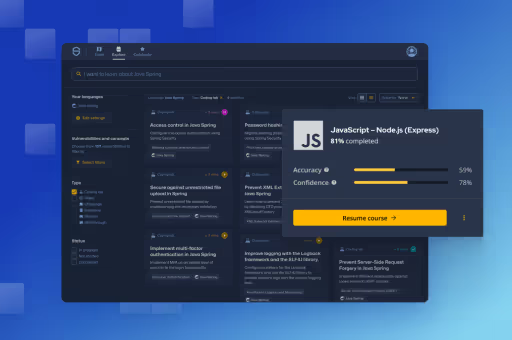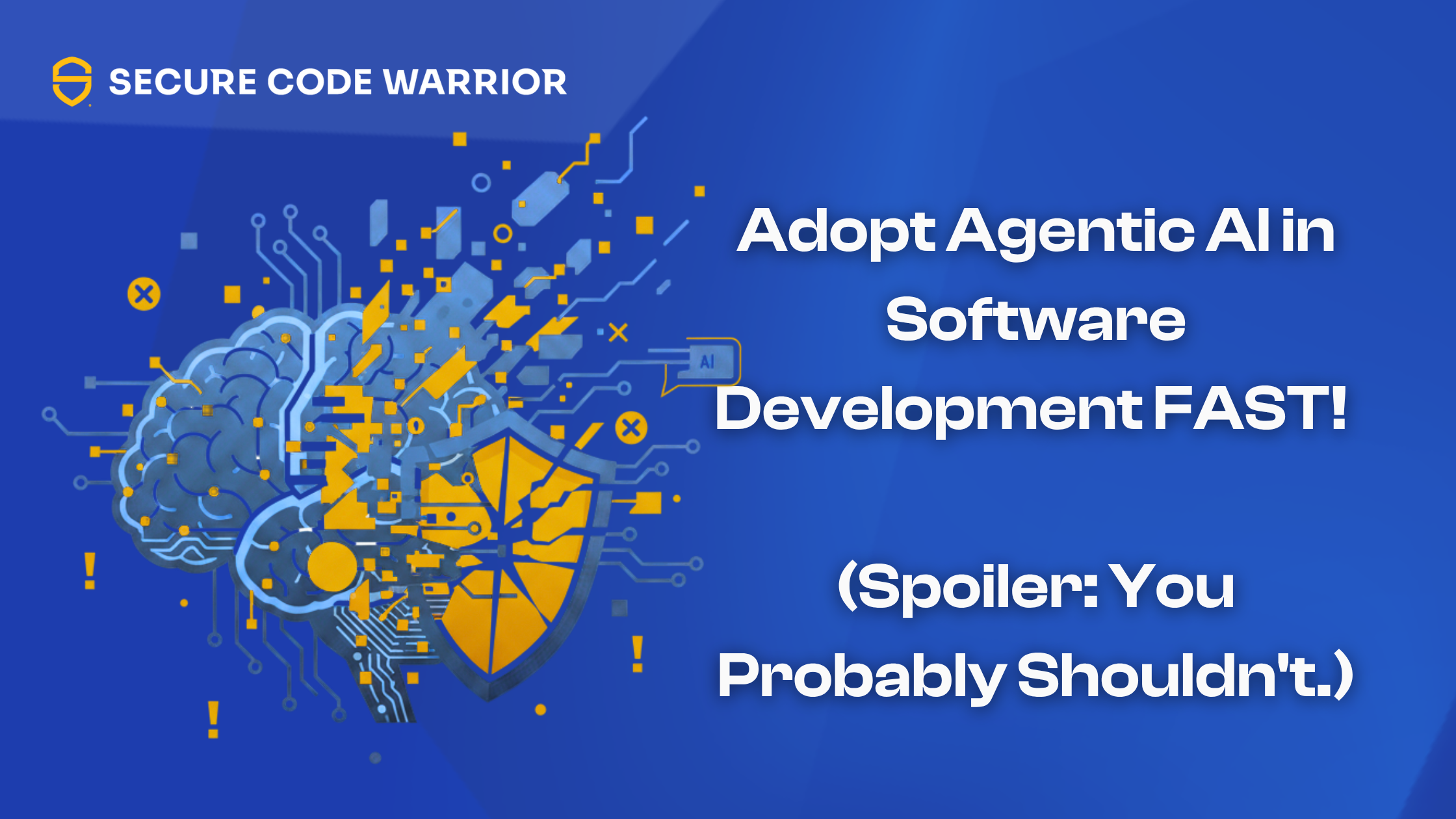
Coders Conquer Security OWASP Top 10 API Series - Mass Assignment
The mass assignment vulnerability was born because many modern frameworks encourage developers to use functions that automatically bind input from clients into code variables and internal objects. This is done to simplify code and speed up operations.
Attackers can use this methodology to force changes to object properties that should never be updated by a client. Normally this results in business-specific problems, like a user adding admin privileges to themselves as opposed to bringing down a website or stealing corporate secrets. Attackers must also have some idea of the relationships between objects and the business logic of the application they are exploiting.
However, none of that makes the mass assignment vulnerability any less dangerous in the hands of a clever and malicious user.
Before we launch into the full guide, play our gamified challenge and see how you fare:
How can attackers exploit the mass assignment vulnerability?
The scenario put forward by OWASP (and modified slightly by us) assumes a ride-sharing application that includes different properties bound to objects in the code using mass assignment. These include permission-related properties that users can change and process-dependent properties that should only be set internally by the application. Both use mass assignment to bind properties to objects.
In this scenario, the ride-sharing application allows users to update their profiles, as is common in many user-facing applications. This is done using an API call sent to PUT, which returns the following JSON object:
{"user_name":"SneakySnake", "age":17, "is_admin":false}
Because the attacker, Mr. SneakySnake in this case, has figured out the relationship between the properties and the objects, he can resend his original request to update his profile with the following string:
{"user_name":"SneakySnake","age":24,, "is_admin":true}
As the endpoint is vulnerable to mass assignment, it accepts the new input as valid. Not only did our hacker add a few years to his profile, but he also assigned himself admin privileges.
Eliminating the mass assignment vulnerability
As convenient as it might be to use the mass assignment function in some frameworks, you should avoid doing that if you want to keep your APIs secure. Instead, parse request values rather than binding them directly to an object. You can also use a reduced data transfer object which would provide nearly the same convenience as binding directly to the object itself, only without the associated risk.
As an extra precaution, sensitive properties like admin privileges from the example above could be denied so that they will never be accepted by the server on an API call. An even better idea might be to deny every property by default and then allow specific, non-sensitive ones that you want users to be able to update or change. Doing any of those things can help to lock down APIs and eliminate the mass assignment vulnerability from your environment.
Check out the Secure Code Warrior blog pages for more insight about this vulnerability and how to protect your organization and customers from the ravages of other security flaws. You can also try a demo of the Secure Code Warrior training platform to keep all your cybersecurity skills honed and up-to-date.


The mass assignment vulnerability was born as a result of many modern frameworks encouraging developers to use functions that automatically bind input from clients into code variables and internal objects.
Matias Madou, Ph.D. is a security expert, researcher, and CTO and co-founder of Secure Code Warrior. Matias obtained his Ph.D. in Application Security from Ghent University, focusing on static analysis solutions. He later joined Fortify in the US, where he realized that it was insufficient to solely detect code problems without aiding developers in writing secure code. This inspired him to develop products that assist developers, alleviate the burden of security, and exceed customers' expectations. When he is not at his desk as part of Team Awesome, he enjoys being on stage presenting at conferences including RSA Conference, BlackHat and DefCon.

Secure Code Warrior is here for your organization to help you secure code across the entire software development lifecycle and create a culture in which cybersecurity is top of mind. Whether you’re an AppSec Manager, Developer, CISO, or anyone involved in security, we can help your organization reduce risks associated with insecure code.
Book a demoMatias Madou, Ph.D. is a security expert, researcher, and CTO and co-founder of Secure Code Warrior. Matias obtained his Ph.D. in Application Security from Ghent University, focusing on static analysis solutions. He later joined Fortify in the US, where he realized that it was insufficient to solely detect code problems without aiding developers in writing secure code. This inspired him to develop products that assist developers, alleviate the burden of security, and exceed customers' expectations. When he is not at his desk as part of Team Awesome, he enjoys being on stage presenting at conferences including RSA Conference, BlackHat and DefCon.
Matias is a researcher and developer with more than 15 years of hands-on software security experience. He has developed solutions for companies such as Fortify Software and his own company Sensei Security. Over his career, Matias has led multiple application security research projects which have led to commercial products and boasts over 10 patents under his belt. When he is away from his desk, Matias has served as an instructor for advanced application security training courses and regularly speaks at global conferences including RSA Conference, Black Hat, DefCon, BSIMM, OWASP AppSec and BruCon.
Matias holds a Ph.D. in Computer Engineering from Ghent University, where he studied application security through program obfuscation to hide the inner workings of an application.


The mass assignment vulnerability was born because many modern frameworks encourage developers to use functions that automatically bind input from clients into code variables and internal objects. This is done to simplify code and speed up operations.
Attackers can use this methodology to force changes to object properties that should never be updated by a client. Normally this results in business-specific problems, like a user adding admin privileges to themselves as opposed to bringing down a website or stealing corporate secrets. Attackers must also have some idea of the relationships between objects and the business logic of the application they are exploiting.
However, none of that makes the mass assignment vulnerability any less dangerous in the hands of a clever and malicious user.
Before we launch into the full guide, play our gamified challenge and see how you fare:
How can attackers exploit the mass assignment vulnerability?
The scenario put forward by OWASP (and modified slightly by us) assumes a ride-sharing application that includes different properties bound to objects in the code using mass assignment. These include permission-related properties that users can change and process-dependent properties that should only be set internally by the application. Both use mass assignment to bind properties to objects.
In this scenario, the ride-sharing application allows users to update their profiles, as is common in many user-facing applications. This is done using an API call sent to PUT, which returns the following JSON object:
{"user_name":"SneakySnake", "age":17, "is_admin":false}
Because the attacker, Mr. SneakySnake in this case, has figured out the relationship between the properties and the objects, he can resend his original request to update his profile with the following string:
{"user_name":"SneakySnake","age":24,, "is_admin":true}
As the endpoint is vulnerable to mass assignment, it accepts the new input as valid. Not only did our hacker add a few years to his profile, but he also assigned himself admin privileges.
Eliminating the mass assignment vulnerability
As convenient as it might be to use the mass assignment function in some frameworks, you should avoid doing that if you want to keep your APIs secure. Instead, parse request values rather than binding them directly to an object. You can also use a reduced data transfer object which would provide nearly the same convenience as binding directly to the object itself, only without the associated risk.
As an extra precaution, sensitive properties like admin privileges from the example above could be denied so that they will never be accepted by the server on an API call. An even better idea might be to deny every property by default and then allow specific, non-sensitive ones that you want users to be able to update or change. Doing any of those things can help to lock down APIs and eliminate the mass assignment vulnerability from your environment.
Check out the Secure Code Warrior blog pages for more insight about this vulnerability and how to protect your organization and customers from the ravages of other security flaws. You can also try a demo of the Secure Code Warrior training platform to keep all your cybersecurity skills honed and up-to-date.

The mass assignment vulnerability was born because many modern frameworks encourage developers to use functions that automatically bind input from clients into code variables and internal objects. This is done to simplify code and speed up operations.
Attackers can use this methodology to force changes to object properties that should never be updated by a client. Normally this results in business-specific problems, like a user adding admin privileges to themselves as opposed to bringing down a website or stealing corporate secrets. Attackers must also have some idea of the relationships between objects and the business logic of the application they are exploiting.
However, none of that makes the mass assignment vulnerability any less dangerous in the hands of a clever and malicious user.
Before we launch into the full guide, play our gamified challenge and see how you fare:
How can attackers exploit the mass assignment vulnerability?
The scenario put forward by OWASP (and modified slightly by us) assumes a ride-sharing application that includes different properties bound to objects in the code using mass assignment. These include permission-related properties that users can change and process-dependent properties that should only be set internally by the application. Both use mass assignment to bind properties to objects.
In this scenario, the ride-sharing application allows users to update their profiles, as is common in many user-facing applications. This is done using an API call sent to PUT, which returns the following JSON object:
{"user_name":"SneakySnake", "age":17, "is_admin":false}
Because the attacker, Mr. SneakySnake in this case, has figured out the relationship between the properties and the objects, he can resend his original request to update his profile with the following string:
{"user_name":"SneakySnake","age":24,, "is_admin":true}
As the endpoint is vulnerable to mass assignment, it accepts the new input as valid. Not only did our hacker add a few years to his profile, but he also assigned himself admin privileges.
Eliminating the mass assignment vulnerability
As convenient as it might be to use the mass assignment function in some frameworks, you should avoid doing that if you want to keep your APIs secure. Instead, parse request values rather than binding them directly to an object. You can also use a reduced data transfer object which would provide nearly the same convenience as binding directly to the object itself, only without the associated risk.
As an extra precaution, sensitive properties like admin privileges from the example above could be denied so that they will never be accepted by the server on an API call. An even better idea might be to deny every property by default and then allow specific, non-sensitive ones that you want users to be able to update or change. Doing any of those things can help to lock down APIs and eliminate the mass assignment vulnerability from your environment.
Check out the Secure Code Warrior blog pages for more insight about this vulnerability and how to protect your organization and customers from the ravages of other security flaws. You can also try a demo of the Secure Code Warrior training platform to keep all your cybersecurity skills honed and up-to-date.

Click on the link below and download the PDF of this resource.
Secure Code Warrior is here for your organization to help you secure code across the entire software development lifecycle and create a culture in which cybersecurity is top of mind. Whether you’re an AppSec Manager, Developer, CISO, or anyone involved in security, we can help your organization reduce risks associated with insecure code.
View reportBook a demoMatias Madou, Ph.D. is a security expert, researcher, and CTO and co-founder of Secure Code Warrior. Matias obtained his Ph.D. in Application Security from Ghent University, focusing on static analysis solutions. He later joined Fortify in the US, where he realized that it was insufficient to solely detect code problems without aiding developers in writing secure code. This inspired him to develop products that assist developers, alleviate the burden of security, and exceed customers' expectations. When he is not at his desk as part of Team Awesome, he enjoys being on stage presenting at conferences including RSA Conference, BlackHat and DefCon.
Matias is a researcher and developer with more than 15 years of hands-on software security experience. He has developed solutions for companies such as Fortify Software and his own company Sensei Security. Over his career, Matias has led multiple application security research projects which have led to commercial products and boasts over 10 patents under his belt. When he is away from his desk, Matias has served as an instructor for advanced application security training courses and regularly speaks at global conferences including RSA Conference, Black Hat, DefCon, BSIMM, OWASP AppSec and BruCon.
Matias holds a Ph.D. in Computer Engineering from Ghent University, where he studied application security through program obfuscation to hide the inner workings of an application.
The mass assignment vulnerability was born because many modern frameworks encourage developers to use functions that automatically bind input from clients into code variables and internal objects. This is done to simplify code and speed up operations.
Attackers can use this methodology to force changes to object properties that should never be updated by a client. Normally this results in business-specific problems, like a user adding admin privileges to themselves as opposed to bringing down a website or stealing corporate secrets. Attackers must also have some idea of the relationships between objects and the business logic of the application they are exploiting.
However, none of that makes the mass assignment vulnerability any less dangerous in the hands of a clever and malicious user.
Before we launch into the full guide, play our gamified challenge and see how you fare:
How can attackers exploit the mass assignment vulnerability?
The scenario put forward by OWASP (and modified slightly by us) assumes a ride-sharing application that includes different properties bound to objects in the code using mass assignment. These include permission-related properties that users can change and process-dependent properties that should only be set internally by the application. Both use mass assignment to bind properties to objects.
In this scenario, the ride-sharing application allows users to update their profiles, as is common in many user-facing applications. This is done using an API call sent to PUT, which returns the following JSON object:
{"user_name":"SneakySnake", "age":17, "is_admin":false}
Because the attacker, Mr. SneakySnake in this case, has figured out the relationship between the properties and the objects, he can resend his original request to update his profile with the following string:
{"user_name":"SneakySnake","age":24,, "is_admin":true}
As the endpoint is vulnerable to mass assignment, it accepts the new input as valid. Not only did our hacker add a few years to his profile, but he also assigned himself admin privileges.
Eliminating the mass assignment vulnerability
As convenient as it might be to use the mass assignment function in some frameworks, you should avoid doing that if you want to keep your APIs secure. Instead, parse request values rather than binding them directly to an object. You can also use a reduced data transfer object which would provide nearly the same convenience as binding directly to the object itself, only without the associated risk.
As an extra precaution, sensitive properties like admin privileges from the example above could be denied so that they will never be accepted by the server on an API call. An even better idea might be to deny every property by default and then allow specific, non-sensitive ones that you want users to be able to update or change. Doing any of those things can help to lock down APIs and eliminate the mass assignment vulnerability from your environment.
Check out the Secure Code Warrior blog pages for more insight about this vulnerability and how to protect your organization and customers from the ravages of other security flaws. You can also try a demo of the Secure Code Warrior training platform to keep all your cybersecurity skills honed and up-to-date.
Table of contents
Matias Madou, Ph.D. is a security expert, researcher, and CTO and co-founder of Secure Code Warrior. Matias obtained his Ph.D. in Application Security from Ghent University, focusing on static analysis solutions. He later joined Fortify in the US, where he realized that it was insufficient to solely detect code problems without aiding developers in writing secure code. This inspired him to develop products that assist developers, alleviate the burden of security, and exceed customers' expectations. When he is not at his desk as part of Team Awesome, he enjoys being on stage presenting at conferences including RSA Conference, BlackHat and DefCon.

Secure Code Warrior is here for your organization to help you secure code across the entire software development lifecycle and create a culture in which cybersecurity is top of mind. Whether you’re an AppSec Manager, Developer, CISO, or anyone involved in security, we can help your organization reduce risks associated with insecure code.
Book a demoDownloadResources to get you started
Threat Modeling with AI: Turning Every Developer into a Threat Modeler
Walk away better equipped to help developers combine threat modeling ideas and techniques with the AI tools they're already using to strengthen security, improve collaboration, and build more resilient software from the start.










%20(1).avif)
.png)


.png)



